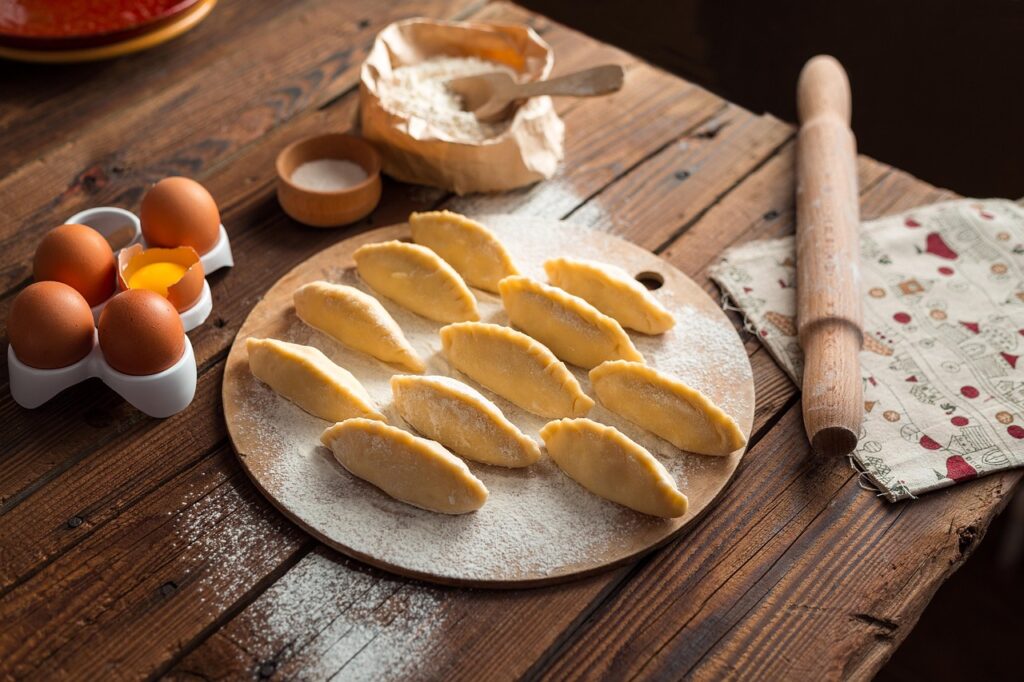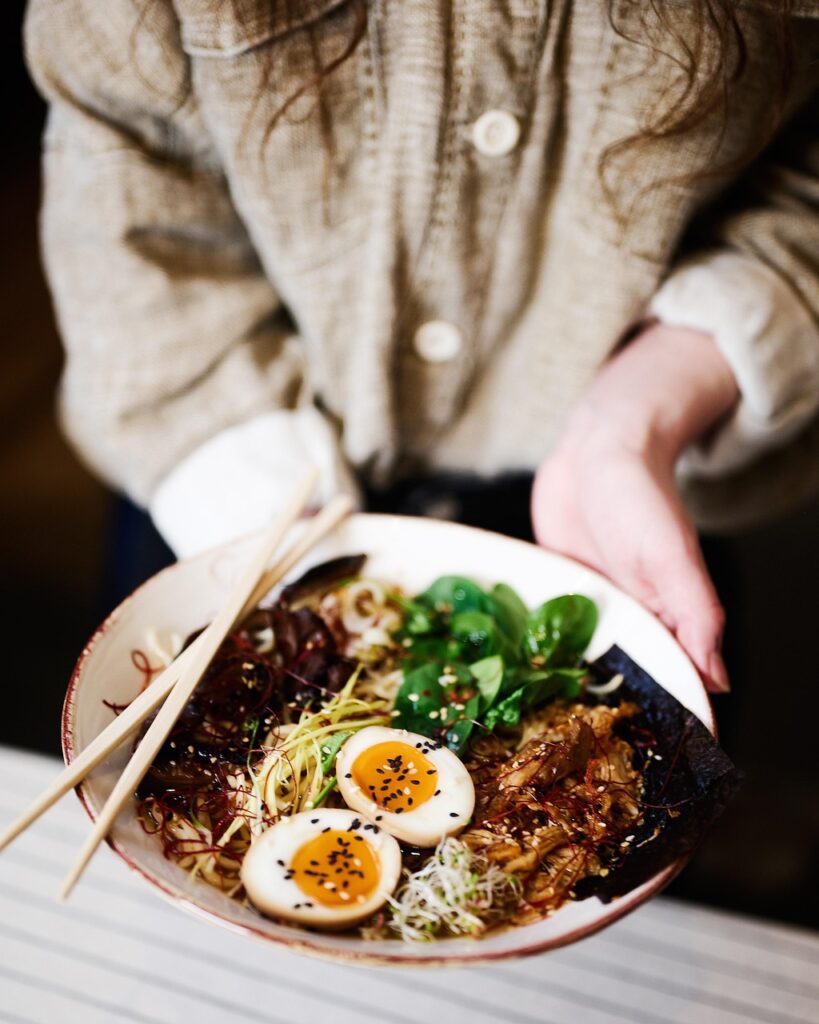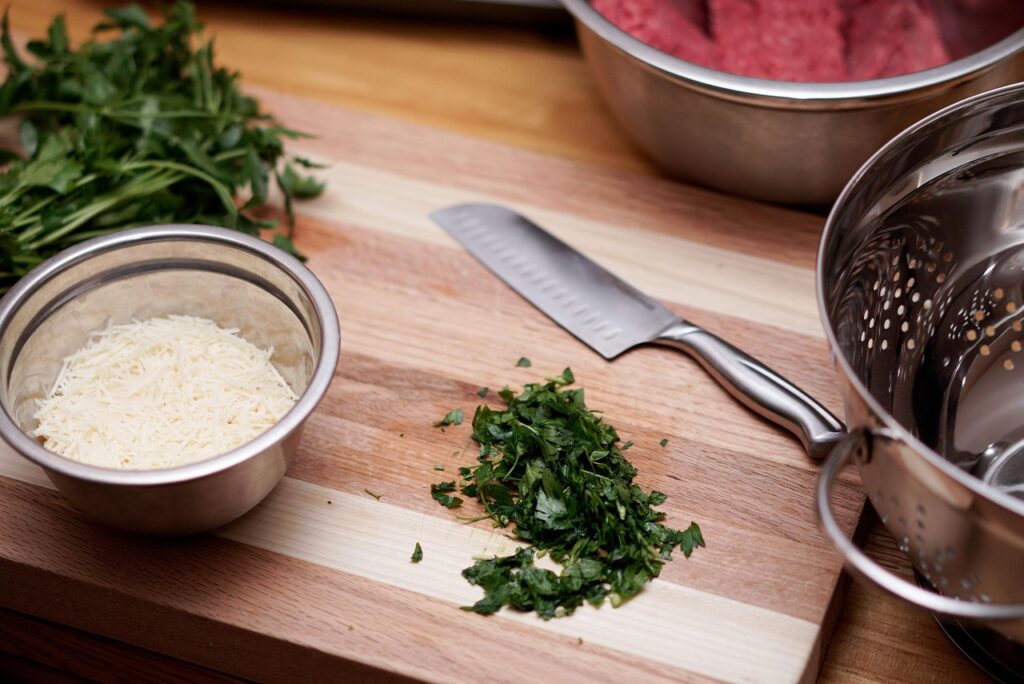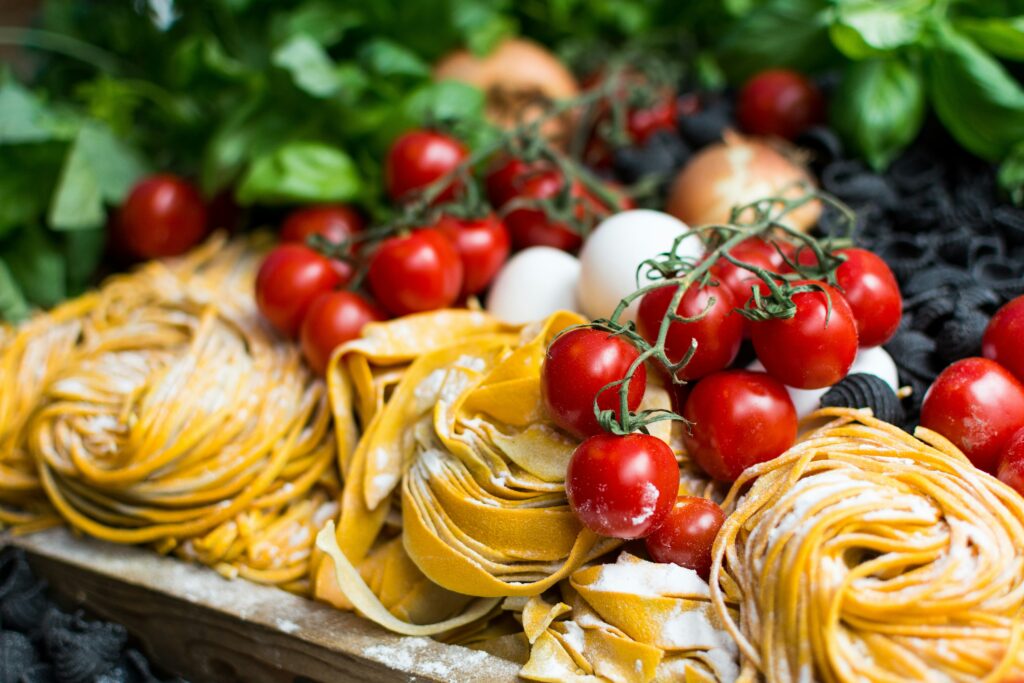
Intro
Before mindfulness became a trend, our grandmothers were already practicing it — kneading bread slowly, chopping vegetables in silence, stirring soup with care.
Cooking was never just about feeding the body; it was a quiet ritual of presence.
Today, most of us rush through it. But when you bring awareness back into your kitchen, even a simple meal becomes an act of grounding.
The Energy You Bring to the Food
Every gesture carries intention.
When you cook with frustration, you taste it.
When you breathe, slow down, and enjoy the rhythm of slicing, stirring, and serving — you infuse that calm into the meal itself.
In Ayurveda and traditional Mediterranean kitchens alike, food is considered living energy.
Your state of mind while preparing it shapes how your body receives it.

A Sensory Practice
Try this next time you cook:
- Engage your senses.
Notice the smell of herbs, the texture of olive oil on your fingers, the sound of the pan warming up. - Slow your movements.
Let chopping or mixing become rhythmic, almost like breathing. - Appreciate the transformation.
Watch ingredients change shape, color, and aroma — it’s alchemy in real time.
The more you notice, the more your nervous system shifts into a state of calm.
Why Slow Food Heals
Cooking slowly activates the parasympathetic nervous system — the body’s “rest and digest” mode.
It helps regulate appetite, improve digestion, and even lower anxiety levels.
That’s why, after a calm meal, you often feel not just full, but at peace.
A Simple Ritual to Try
Light a candle before you start cooking.
Play soft music or open a window.
Take one deep breath before touching the ingredients.
Let your kitchen become a sacred space where nourishment and stillness meet.

Closing Reflection
Food is our most intimate connection to the Earth.
Every ingredient carries sunlight, soil, and water.
When we cook with awareness, we’re not just feeding ourselves — we’re participating in the rhythm of nature.



